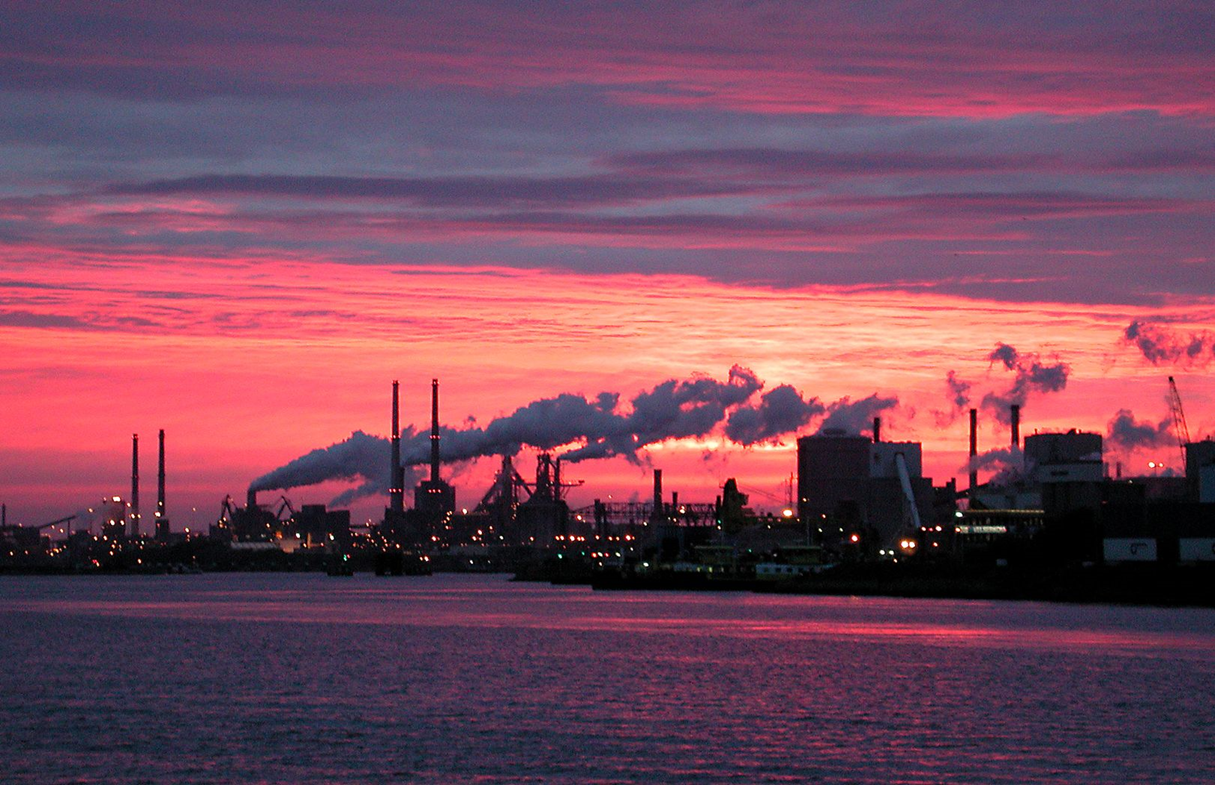In the blast furnace, iron ore (in the form of sinter, pellets, and lump ore) and coal (in the form of coke and pulverized coal), and flux (alkaline or “basic” materials, typically burnt lime or dolomite, which react with impurities to form slag that can be separated) are injected into the top of the blast furnace, flowing downward into contact with upward-moving, hot, CO-rich gases at about 900 to 1300 ℃. Through this process, the iron ore (Fe2O3) is reduced into elemental iron, and the iron is mixed with carbon monoxide (CO) from the flue gas. Carbon (supplied by coal and coke) acts as a reducing agent. The molten, carbon-rich (4-5%) pig iron (also referred to as hot metal) that is produced in the blast furnace is then oxidized in a basic oxygen furnace, in an exothermic oxidation reaction as pure, hot oxygen is blown over the metal, to reduce the carbon content to below 2% (often less than 1%, depending on final product specifications). Liquid crude steel is then tapped from the furnace, and slag (a byproduct, a mixture of metal oxides) removed. Coke (a high carbon content fuel, with most impurities presen t in coal removed) can be made onsite by heating coal in a coke oven to a high temperature (typically around 1000 ℃) in vacuum conditions, or can be purchased from an offsite coke oven.
The slag (by-product) can be used as an additive to cement, creating concrete mixtures with advantageous properties and reducing the amount of Portland cement needed, or can be sold for liming purposes to the agricultural sector.
The process also produces several off-gases from the coke ovens, blast furnace, and basic oxygen furnace with energy content that can be used. Their composition and calorific value is shown below. They can be reinjected at various points during the process (in the coke oven, pellet plant, and blast furnace), used to produce heat and power, and/or used as a feedstock for chemical production. In the case of Tata Steel in IJmuiden, the only BOF steelmaking process in the Netherlands, these excess gases arising from production are either combusted for preheating of furnaces, reinjected to the blast furnace, or used to generate electricity at nearby power plants (one owned by Tata Steel, and 3 others owned by other enterprises). The values shown as outputs in this factsheet are the net production after re-use on-site (only the part that is exported to other sites or used for power generation). For a detailed view of on-site use of these gases, see Keys, van Hout and Daniëls, 2019 and IEAGHG 2019.
Typical composition of gases:
-
Coke oven gas: 60% H2, 23% CH4, 6% N2, 4% H2O, 4% CO, 1% CO2, 2, 3% other; 17.3 MJ/normal cubic meter (LHV)
-
Blast furnace gas: 49% N2, 22% CO, 22% CO2, 4% H2, 3% H2O; 3.2 MJ/normal cubic meter (LHV)
-
Basic oxygen furnace gas: 57% CO, 14% CO2, 14% N2, 12% H2O, 3% H2; 7.5 MJ/normal cubic meter (LHV).
All information in the datasheets is also available in ESDL (Energy System Description Language). You can find them in the Energy Data Repository (EDR).
